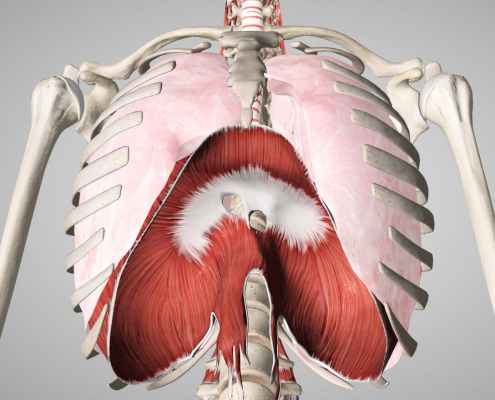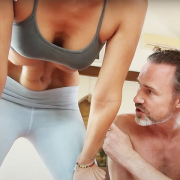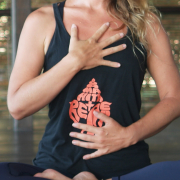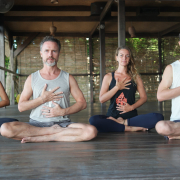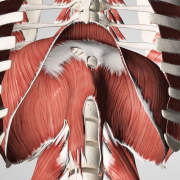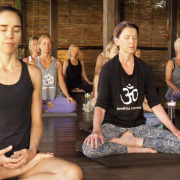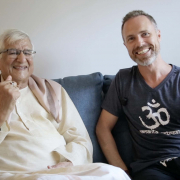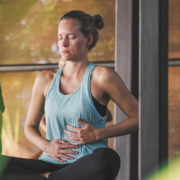 https://samahitaretreat.com/wp-content/uploads/2024/02/basic-breathwork.webp
600
798
Dr. Paul Dallaghan
http://samahitaretreat.com/wp-content/uploads/2024/01/samahita-logo-v2.svg
Dr. Paul Dallaghan2024-02-28 20:34:422024-02-28 20:35:53Navigate the World of Breathing
https://samahitaretreat.com/wp-content/uploads/2024/02/basic-breathwork.webp
600
798
Dr. Paul Dallaghan
http://samahitaretreat.com/wp-content/uploads/2024/01/samahita-logo-v2.svg
Dr. Paul Dallaghan2024-02-28 20:34:422024-02-28 20:35:53Navigate the World of Breathing9 Benefits of Correct Breathing and Doing Breathing Exercises Part Two of Breathing Exercises and Physical Health – Challenges & Benefits
Breath is with us from the moment of birth, a fact of life that we allow to go on as we take it for granted. Yet at any moment of compromise, such as being out-of-breath, we immediately suffer. This suffering may result from a malfunction in the body because of low oxygen (hypoxia) or an upsurge of fear as we feel the connection to life is threatened. Breath is that important, that powerful. It influences every metabolic function, meaning your level of energy and subsequently how you feel. Based on how you feel it impacts how you relate to others. The breath’s poor performance is both a contributor to the malfunction of other organs and their systems in the body as well as an indicator that something is not right in the body, some form of ill health. Yet it mirrors even more so the mental condition. Can one be consumed with anger and have a comfortable, smooth breath? The more ancient teachings around the breath, especially within the Hatha yoga tradition of 600-900 years back, respect the breath so much they advise caution and care when training it, as one would train a wild elephant. They also refer to the health benefits of regulated breathing but recommend its practice and mastery to channel the mental activity (1). An experience that brings one to a more centered state of being.
You can find details on what breathwork is, the description of breathing exercises, and several specific breathing exercise routines here on Samahita’s blog.
“The breath’s poor performance is both a contributor to the malfunction of other organs and their systems in the body as well as an indicator that something is not right in the body, some form of ill health.”
Part one of this article dealt with the Challenges to Proper Breathing. Though we are faced with the plight of air pollution there are precautions we can take as well as empowering our immune system to handle such toxins, something breathing exercises can actually help with. Similarly, the empowered immune system is the best defense against infections and viruses, from an organic point of view. Essential to this correct breath is where it enters. Many are not aware that throughout the day you breathe through your mouth. Most likely intermittently which makes breathing even more irregular. You then have no control over how the breath will proceed when asleep. Often through the mouth and for many inconsistent, especially given the rise in sleep apnea which in and of itself leads to increased arousal and the burden of stress (2).
Why does the quality of your breathing deteriorate as life goes on?
To answer this scientifically at the moment is impossible as no studies have been done to monitor a group from birth prospectively and report on that 20, 40 and even 60 years later. We can however employ good hypotheses and statements from older texts around the matter. To fully treat this topic involves its own dedicated article later. For now it is possible to state that the primary cause for deterioration in the quality of respiration is psychological, more specifically emotional. The secondary cause is physiological, particularly autonomic.
Older yogic and tantric texts clearly state a link between breath and mind – as the mind moves so the breath does, and vice versa. Early on in life we self-learn to handle the intensity of emotions through some form of breath suppression. As a result the breath becomes short or shallow, quick and uneven. In some cases all of these. This can trigger autonomic irregularity. Your autonomic nervous system controls all the unconscious functions of your body, from the heart beating to digestion and elimination. It even controls your breathing when you don’t voluntarily get involved with it. As the physiological side becomes reactive instead of well-regulated your breathing follows suit. The outcome is an unhelpful negative spiral in terms of irregular and inefficient breathing, influenced by and influencing how your mind handles things, and how your physiology both manages and responds to events in life.
Taking all that in it is possible to see the immense psychosomatic cause and effect with respect to your breathing. In short, the burden of stress in mind and body destabilize your breathing from a young age, often without your conscious awareness unless it is acute at certain moments. This respiratory instability impacts the robustness of your physiological functioning which leaves you either uncomfortable, anxious, feeling overloaded and incapable of voluntarily improving and training your breathing let alone being aware and knowing how to breathe correctly most of the day (and asleep at night). For many it goes on at a pace over years that doesn’t raise alarms till a later point in life when the stress feels too much and the breathing is reactionary to what you feel as opposed to supportive to pacify the distress.
“In many ways, the solution is simple enough: improve your breathing and begin the process of regulating emotional responses and physical health. As a society we are sure to have nicer people, kinder, more understanding, less anger and violence”.
The insipid culprit is right under your nose all the time and you don’t even read it. Irregular breathing now affects your emotional reactivity and physiological performance. There is an entire tantric text, Shivasvarodaya, devoted to the knowledge, understanding and subtle mastery of the breath and how it can be managed to effect every function of life (3). Until recently our modern society has not bothered to take that seriously. In many ways, the solution is simple enough: improve your breathing and begin the process of regulating emotional responses and physical health. As a society we are sure to have nicer people, kinder, more understanding, less anger and violence. Knowing all that, how can you not get up in the morning and devote some time to sit and engage in some helpful breathing exercises. Samahita offers you some right here – both easy to follow, powerful in their effect, all you need to do is sit, understand, concentrate, and do – breathe.
Given all that, here are only some of the benefits you could derive from correct breathing and regularly doing breathing exercises:
- Handle an anxiety or panic attack: immediately lay down on your belly with folded arms and take medium size but longer duration breaths. Stay there breathing until the acute anxiety state diminishes. For more read this
- Reduce your burden of stress: to be truly effective in this you need to become regular in devoting around ten minutes a day to sit and work with the breath. It works based on all the reasons noted above. You can also read more about improved stress handling from breathwork here It seems in today’s world all age groups of people report more stress than reported over 20 years ago. However, for those in the age range of 45-64 years stress reports in the 2010s were 19% higher than reported by the same age group in the 1990s 4). Reducing your burden of stress means the power of the breath to help you not take on the psychological association in every situation.
- Strengthen stress resilience: this point is close to the previous point, but different. Reducing your burden means taking on less in a personalized emotional way. Raising your resilience increases your power to handle life’s issues. This involves the physiology behind respiration. Each inhale elicits a sympathetic response, so your heart will slightly increase, and each exhale the opposite, a parasympathetic response, which slows your heart. When healthy and handling stimuli and phenomena, the ingredients of stress, that should cause variations in your heartbeats, a good sign of resilience and health. Clinically it is known as heartrate variability (HRV) and is considered a good gauge of a resilient ability to handle stress. Specified breathwork has been shown in many psychophysiological studies, as well as in certain yoga and meditation researches, to improve HRV and by its functional nature, improve stress resilience (5)
- Anatomical physical improvements to your respiratory, neuroendocrine, cardiovascular and digestive systems:
- a). improve the capacity and functioning of your diaphragm, your primary muscle of breathing which in turn leads to easier and deeper breaths, impacting point 3 above.
- b). an improved better functioning diaphragm massages the lungs, heart, and digestive organs below it in an alternating continuous manner throughout the entire day, increasing blood flow to these organs in the process.
- c). better digestion and elimination: improved diaphragmatic functioning through its massaging effect stimulates the liver, kidneys, bowels, even stomach and pancreas, through its touch, which in turn leads to improved digestive and elimination function. Add to this the changes in autonomic functioning as noted in point 3 above, with greater parasympathetic activity, an overall outcome is improved functioning digestion and elimination.
- d). increased elasticity of lungs as they are literally trained in a physical sense as you sit and go through repetitions of guided, regulated breaths.
- e). the repeated taking in of measured slightly large inhales and the capacity to elongate and draw out the exhale leads to improved respiratory muscular functioning, already referred to in improvements in the diaphragm, but add to that intercostals with rib cage able to move, expand and in true circular fashion, improve the breath even more.
- f). regular breathing exercises and a corrected way of breathing helps you take care of your spine: the crura of the diaphragm attach directly to the spinal column, fascially-linked to the psoas muscle, both attaching along the lumbar spine and overlapping around L1-2. Each good breath provides movement to the lumbar discs along with movement from the diaphragm on back muscles and the rib cage, both influencing the spine via massage on each breath and support muscularly.
- g). dedicated training time in the physical anatomical function of breathing trains the respiratory system, which includes muscles and the nerves that support them, to simply function better and as a result work better over a 24-hour period. This is especially important in terms of how breath works when you sleep.
- h). the trained respiratory system that now functions better over a 24-hour period also improves oxygen uptake and delivery over a 24-hour period. This literally means your cells are better nourished which affects all physical and physiological functions, including brain cells. It is important to understand that at the time of breathing practice you do not take in more oxygen as breaths are slower and longer. However, this time trains your respiratory system and regulates the continuing unconscious activity of breathing so it starts to work better all day and night. This is a HUGE BENEFIT. The only way to receive such a benefit, however, is to regularly do your breathing exercises.
- Breathing exercises are mindful in the moment meditative practices: the requirement to sit, devote the time, focus on the specific regulation of your breath means you are in the moment. It is mindfulness as that is an ingredient of dedicated breathing exercises. A warning: if you do them mechanically after a while you will lose this benefit. Yet this capacity to be in the moment as you practice and be able to plan, handle work, set up meetings or just plan the kids’ meals, leads you to proactively cope. It has been found that proactively coping by balancing living in the moment with the ability to plan for the future led to improved daily stress handling without succumbing to negative moods (6). This study did not directly employ breathing exercises but it did highlight how being in the moment handles stress, a direct outcome of regulating your breath.
- Improve your handling of headaches (even migraines): believe it or not the ancient Sanskrit yoga text Hathapradipika (1) refers to some ailments that breath practice done correctly can solve and headache is on that list. A more recent study in our modern times has published results on its clinical trial of migraine patients, either supplementing their medication with a yoga practice, which included some breathing exercises, or a control group who did not. Though the frequency and intensity of headache was self-reported by both groups, with an empirical count of migraine meds accounted for, the group supplementing with yoga (just one-hour three times a week – not much at all) had a 48% reduction in headaches per month (7). Even if self-report that is still impressive as the control group only reported a 12% decrease.
- Enhance emotional resilience: those who can adapt in different stressful situations without succumbing to negative mood and affect would be considered emotionally resilient. To do so requires an agile autonomic system at the base level of this. Controlled breathing exercises directly affect autonomic functioning by typically shifting to parasympathetic dominance through improved functioning of the cardiac-vagal tone (8). It means regular care to your involuntary nervous system functioning (that’s the autonomic part) through voluntary breath management tends to strengthen your vagal tone which directs each heartbeat. This plays out as improved emotional regulation. More happens in the brain when stress disrupts prefrontal activity and amygdala responses but one of the key ways to get ahead of all these negative emotional pathways is train the breath correctly so it changes autonomic function and the effect in the brain.
- Decrease the risk of loneliness: so how can breathing affect loneliness? I admit a certain amount of speculation to this benefit but warranted, based more on association in studies than actual cause. However, point 5 above informs you that being in the moment is a direct element of how breathing exercises work. In fact it cannot be done correctly without such a mindful attitude. Mindfulness takes you out of your personal rumination, such as “I feel lonely”. Interestingly you practice alone and yet find benefit. Another recent study looked at generational differences in loneliness. Living alone when older (over 70) and feeling isolated in midlife (see point 2 above where midlife stress is much higher today) were both equal risks to loneliness. However, the good news, especially as it relates to improved breathing, is that emotionally-resilient people of any age (see point 7 above), are less at risk of loneliness (9). Based on this large population study people with a stronger capacity to keep emotional balance in any stressful circumstance were 60% less likely to be lonely, regardless of their age. If breathing exercises improve emotional resilience and decreases the stress burden, being more in the moment, it is possible loneliness can be less of an issue for you.
- Improve your sleep: as you train your breath through dedicated exercises you become more natural at breathing through your nose at all times, which includes when you sleep, and, based on many of the points above, your ability to handle stress, be in the moment, and have a better regulated autonomic function, means physiologically and psychologically you are in a personally improved state to sleep more naturally and better. This, as with the breath’s intrinsic effects, is circular: improved sleep reduces stress, makes you feel better, which helps you have the will and interest to commit more to breathing exercises, which helps you reduce sleep disruption (10). Where to start in this cycle? Jump on and do ten minutes of a guided breathing exercise. As an aid for where to start go simple with a bi-ratio breath. Build it from there.
The physiological value of an exercise depends on its capacity to confer physical health on the person practicing it.
The psychological value of an exercise depends on its capacity to confer mental health on the person practicing it.
This brief discussion on the benefits of both correct breathing, which means improved breathing on an on-going basis as well as when you engage in breathing exercises, and as an outcome of directly performing the breathing exercises impacts both physiological and psychological functioning in your life. This can potentially improve your physical and mental health. Which means your daily well-being is in for an upgrade – because you earn it by doing it.
Dr. Paul Dallaghan’s expertise with breathwork, body and meditative practices comes from three sources: (1) three decades of daily dedicated practice and teaching these techniques; (2) uniquely acknowledged in the Yoga tradition by the title of “Master Yogi-Prānācharya (expert in breath)”, following an immersion in the original culture through one-on-one direct training in practice and study of ancient texts; (3) a PhD in doctoral scientific research at a leading US university (Emory) covering both the tradition and science of yoga and breath practices in terms of stress, health and aging. As a result, Paul occupies a unique space to impart genuine teaching and science on the breath, body, and meditative practices, seen as a Teacher-of-teachers and identified to carry on the tradition of Pranayama. His sincere and ongoing role is to teach, write and research, to help put out experienced and authentic information on these areas of how we live, breathe and be, to help people improve their mental and physical health, and live more fulfilling lives.
For more on his background see his bio
References:
(1)
The classical old Hatha yoga text with details on breath and mind: Hathapradipika
Svatmarama. (1983). Hathapradipika: light on the teachings of hatha yoga. The original 13th century classical work on hatha. In S. Digambarji (Ed.): Kaivalyadhama.
(2)
The challenge of obstructive sleep apnea:
Kim, J. B., Seo, B. S., & Kim, J. H. (2019). Effect of arousal on sympathetic overactivity in patients with obstructive sleep apnea. Sleep Med, 62
https://www.ncbi.nlm.nih.gov/pubmed/30975558
(3)
The ancient science of breath text: Shivasvarodaya
Sivasvarodaya – a critical edition. (2015). In Kaivalyadhama_Philisophico_Research_Department (Ed.): Kaivalyadhama
(4)
Stress today versus 20 years ago:
Penn State. “Middle age may be much more stressful now than in the ’90s.” ScienceDaily. ScienceDaily, 7 May 2020. www.sciencedaily.com/releases/2020/05/200507094745.htm
(5)
HRV stress resilience:
Thayer, J. F., Ahs, F., Fredrikson, M., Sollers, J. J., 3rd, & Wager, T. D. (2012). A meta-analysis of heart rate variability and neuroimaging studies: implications for heart rate variability as a marker of stress and health. Neurosci Biobehav Rev, 36(2)
https://www.ncbi.nlm.nih.gov/pubmed/22178086
(6)
In the moment:
Melody G. Polk, Emily L. Smith, Ling-Rui Zhang, Shevaun D. Neupert. Thinking ahead and staying in the present: Implications for reactivity to daily stressors. Personality and Individual Differences, 2020
https://www.sciencedirect.com/science/article/abs/pii/S0191886920301604
(7)
Headaches:
Anand Kumar, Rohit Bhatia, Gautam Sharma, Dhanlika Dhanlika, Sreenivas Vishnubhatla, Rajesh Kumar Singh, Deepa Dash, Manjari Tripathi, M.V. Padma Srivastava. Effect of yoga as add-on therapy in migraine (CONTAIN). Neurology, 2020
https://n.neurology.org/content/early/2020/05/06/WNL.0000000000009473
(8)
Cardiac-vagal tone as seen in HRV and emotional resilience
Katahira, K., Fujimura, T., Matsuda, Y. T., Okanoya, K., & Okada, M. (2014). Individual differences in heart rate variability are associated with the avoidance of negative emotional events. Biol Psychol,
https://www.ncbi.nlm.nih.gov/pubmed/25457639
(9)
Loneliness:
Drew Altschul, Matthew Iveson, Ian J. Deary. Generational differences in loneliness and its psychological and sociodemographic predictors: an exploratory and confirmatory machine learning study. Psychological Medicine, 2020
(10)
Reduce sleep disruption
Ben Simon, E., Rossi, A., Harvey, A. G., & Walker, M. P. (2019). Overanxious and underslept. Nat Hum Behav.
https://www.nature.com/articles/s41562-019-0754-8?proof=true
More from the Samahita Blog
